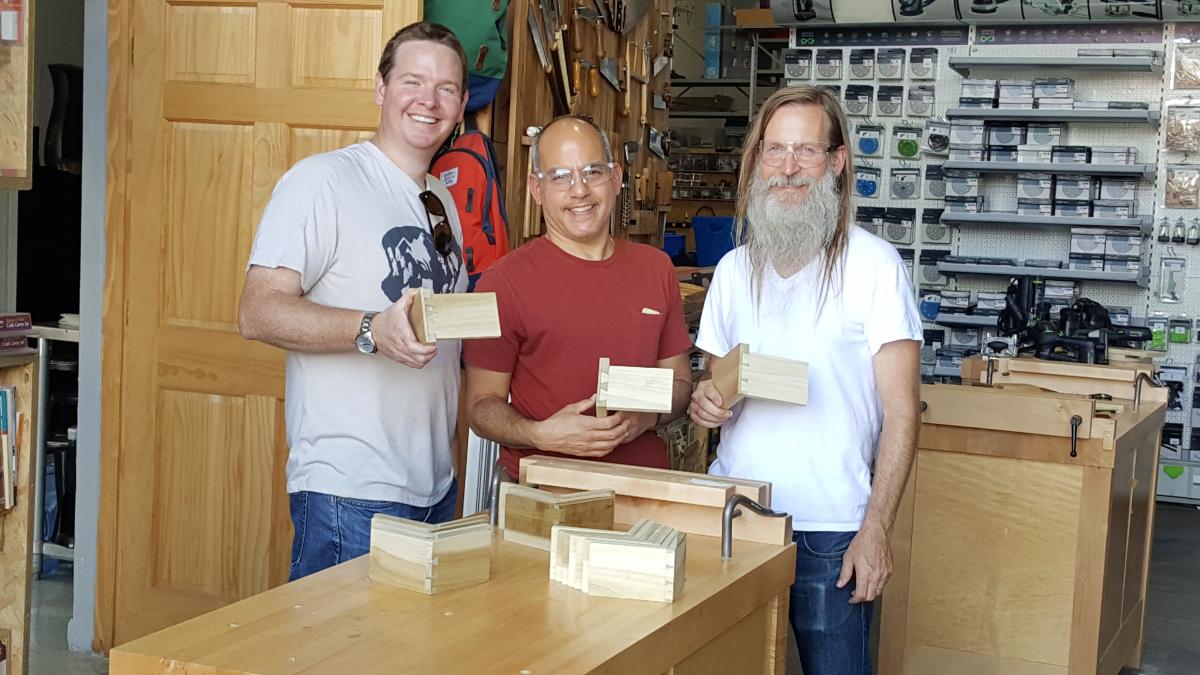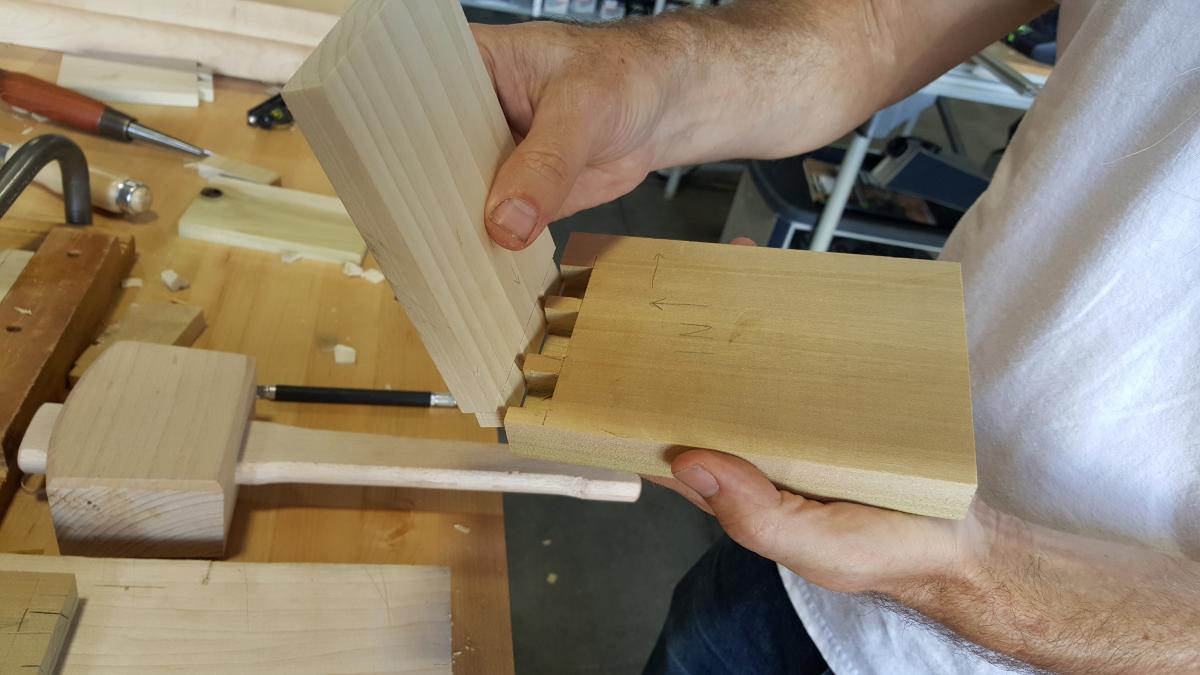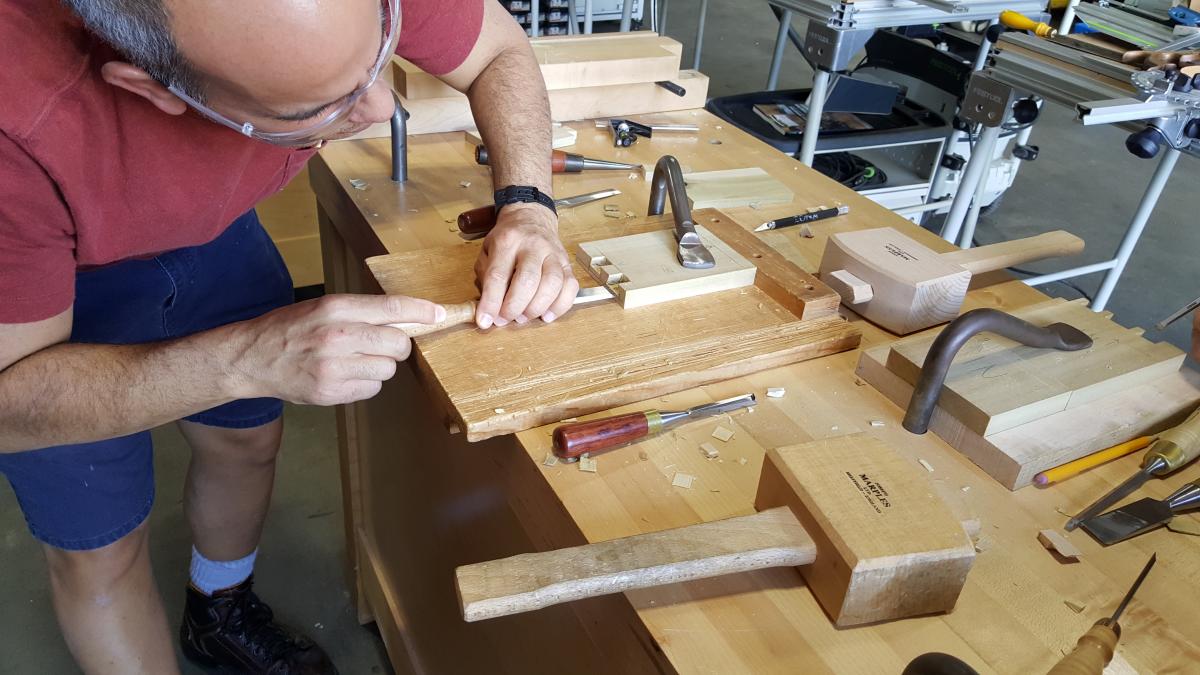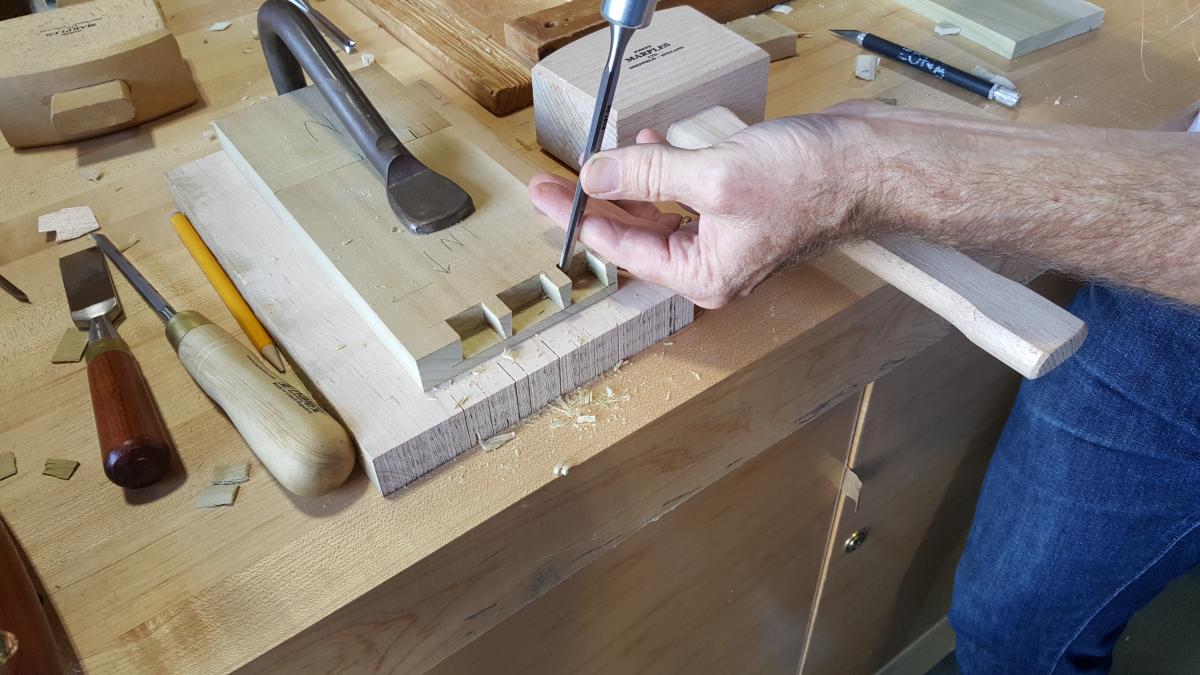
Traditionally, professional joiners and cabinet makers weren't trained the same way we train adults in woodworking nowadays. First of all, joiners and cabinetmakers began their training at much younger ages. Training consisted of a combination of observation and practice and lasted several years. "Practice," of course, sounds a lot less boring than "repetition," but the two are the same thing. Certain tools that are pretty common today didn't exist. Dovetail gauges, honing guides, and magnetic saw guides, commonly used for joinery nowadays, are all inventions for the amateur market.
There is nothing wrong with contemporary methods. There is no reason for anyone to suggest that there is only one true way, but I personally have always been interested in pre-industrial professional practice. I'm sort of like the amateur golfer who wants to be able to hold my own on a pro course. I know the idea is laughable - I will never be able to compete with the pros - but I want to at least be in the ballpark (or golf course).
When I studied years ago I did it the old fashioned way. very slowly, trying for perfection, and intellectualizing every move. Then after I read the Joiner and Cabinetmaker I started thinking about professional training. Trusting yourself, not trying for perfection the first day out - which can be paralying for many, but just trying to do decent apprentice work. Learn how to saw straight. Learn how to do very accurate and consistent layout. What shocked me was how possible it was to get good via planning and practice. I wanted to teach this method of instruction and see its effects on other students. So I developed a multi-part class, Mastering Dovetails, which is finishing up this week. The only tools we use in the class are a dovetail saw, marking gauge, a few chisels, layout knife, and a pencil, with the optional use of a coping saw. Waste on the tail board was done by sawing into the waste with a dovetail saw and making chiseling a little easier. I demonstrated using a coping saw for waste, and some students opted to use that for their tails.
For the first three hours of the class, students were instructed in how to saw straight and use a marking gauge. This was all about hand-eye-body coordination, and how to work with your entire posture so that sawing straight is a natural and expected phenomenon. Then we spent the next three hours cutting a simple through dovetail without marking anything, except waste and where to cut the pins from the tails. The square was used after the fact to check our work, not to lay it out. With the dovetail done, the students took six sets of wood home to work on a daily dovetail homework. For the final three hour session, the students all did a blind dovetail.
I was really impressed by how easily the students learned to saw square. Not perfectly square, but absolutely decent. Their initial dovetails mostly went together without trouble. Everyone came in with pretty well done homework. The blind dovetail (which is exactly like a through dovetail except you have to mark out the top of the tails too, and borrow the teachers skew chisels for the corners) went together for all the students far more easily than I thought. When I studied woodworking, it took ages to get to this point. My students had no trouble. So I am really pleased with the approach and I think it is worth pursuing.

What students liked best about the class is the attention to body movement. One commented that understanding that attention to accurate layout and learning how to saw straight and consistently raises the mist on all joinery, of any complexity and makes it accessible. Where I fell short was I should have written a cheat sheet for the steps in doing the homework. I will for next time (this fall). I also left out some tidbits of information that I ended up sharing a little belatedly. So a cheat sheet would be good.
Another learning experience was the discovery that students didn't all have sharp chisels. So in October, the next time I teach this class) I will add in an initial segment on grinding and sharpening. We do offer these classes for free - we have a free grinding class coming up on September 9th - but in the limited-enrollment Dovetail class, the students will be able to grind and sharpen up their own chisels too.

Overall I am really proud on how well everyone did. What's really cool for a teacher is seeing students who never even owned tools before, who are doing the homework on a kitchen table to a couple of clamps, do great work.
 |
 Joel's Blog
Joel's Blog Built-It Blog
Built-It Blog Video Roundup
Video Roundup Classes & Events
Classes & Events Work Magazine
Work Magazine






It seems like an approach that should help with basic metalworking skills as well. In clockmaking courses that I have been involved as a teacher, we jumped right into making clock wheels without showing how to use the jeweller's saw. Well, a lot a saw blades were broken as students did not know the technique for using the saw on brass sheet. Then after we showed how to do it with proper posture and how to move the arm and hand, no more broken blades!
Very profound -- you don't just use your arms and hands if you want to operate in the pro playing.field. It is a mind-eye coordination of the whole body- especially the pelvis-back-neck control system. Kudos, Joel.